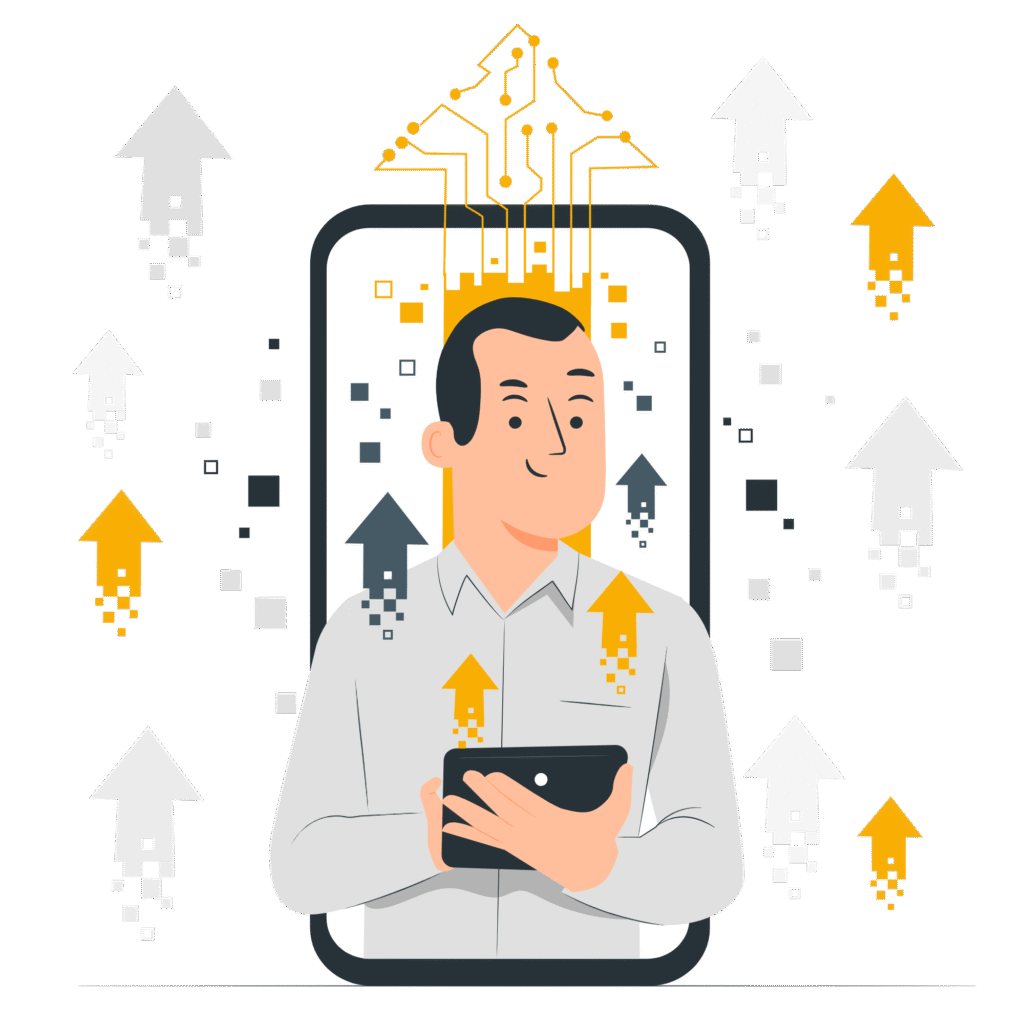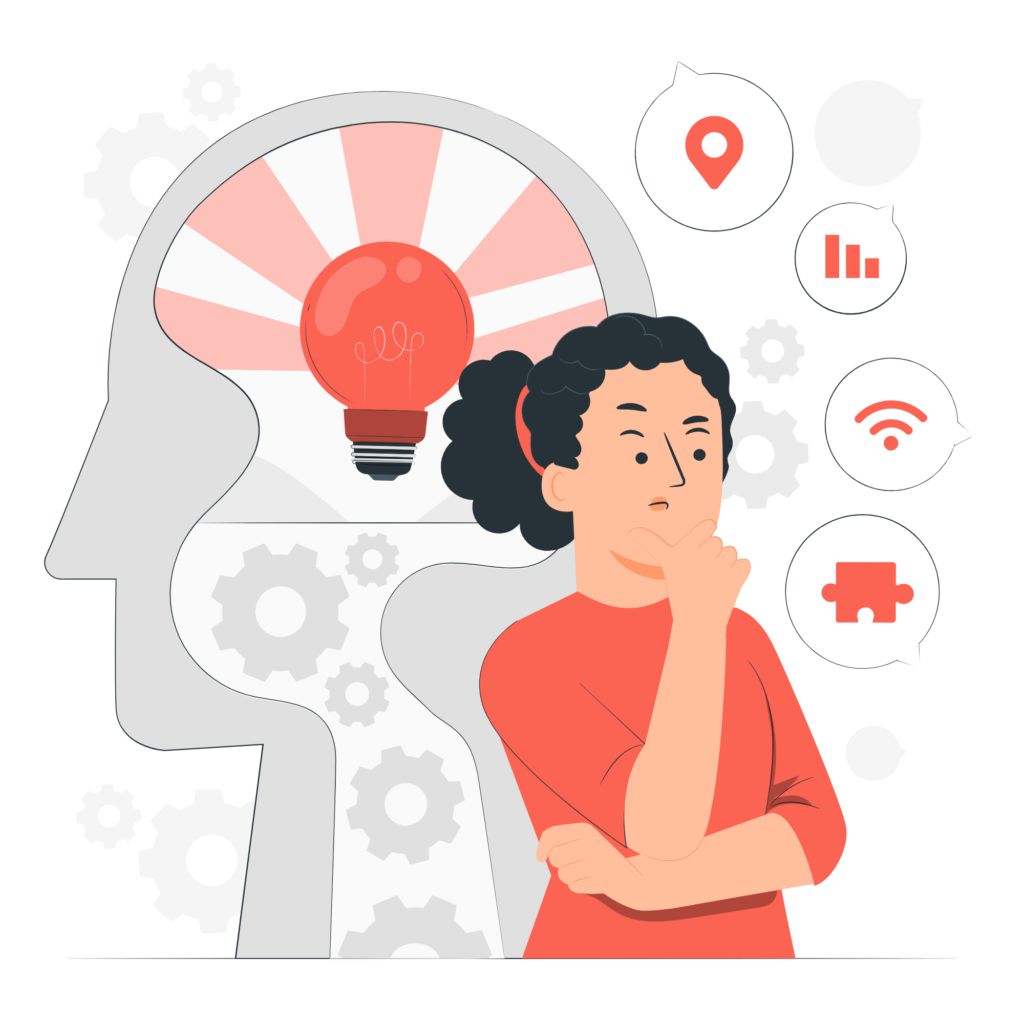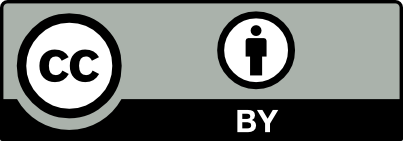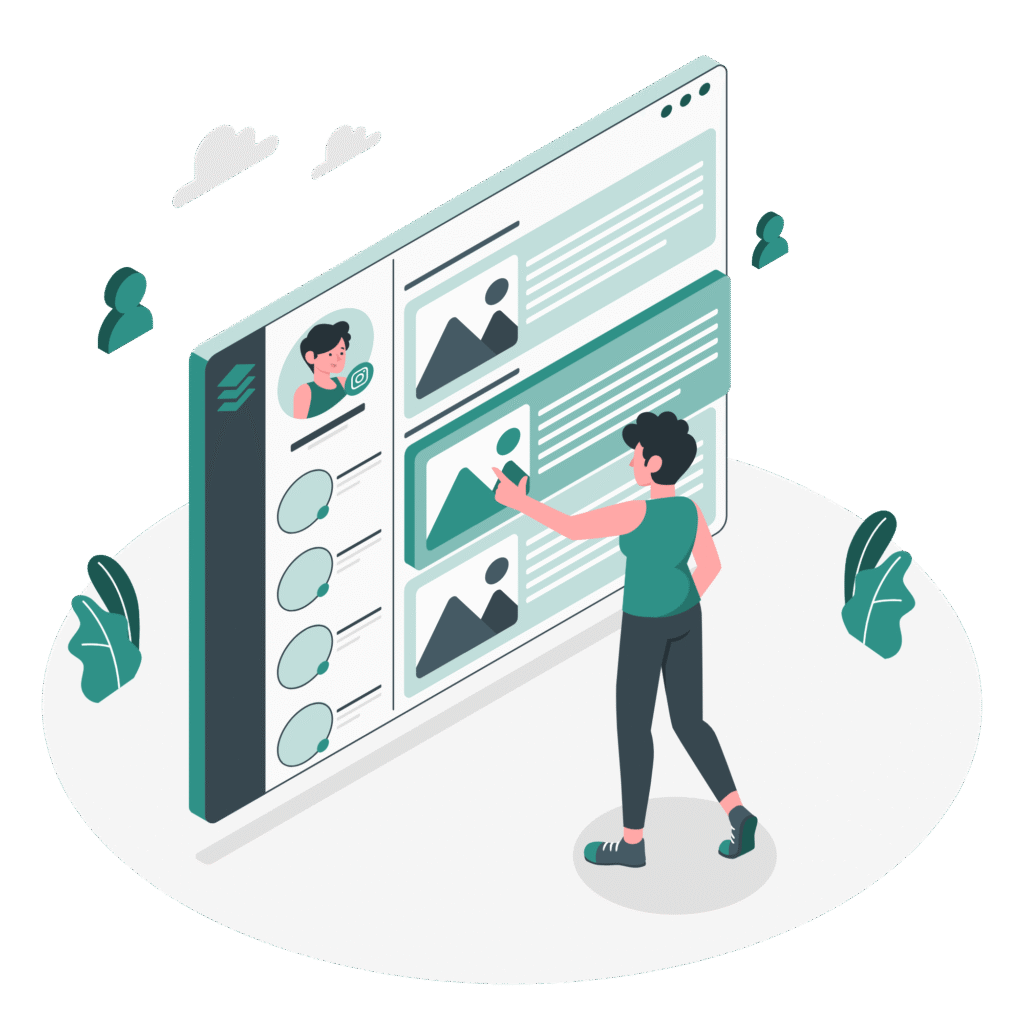
Módulo 2: Fomentar la autonomía digital de los jóvenes evitando abusos en el proceso de aprendizaje

Finalidad del módulo
Este módulo se titula "Fomentar la autonomía digital de los jóvenes previniendo abusos en el proceso de aprendizaje". Este módulo tiene como objetivo proporcionar herramientas y estrategias para que los educadores promuevan el uso saludable y seguro de la tecnología entre los jóvenes, con un enfoque en el desarrollo de habilidades críticas mientras identifican y evitan posibles dificultades. Juntos, exploraremos cómo guiar a los jóvenes hacia una autonomía digital informada, garantizando un aprendizaje enriquecedor y protegido. Mediante la movilización de una serie de recursos y estrategias, los educadores aprenderán a navegar con destreza por el panorama educativo, fomentando un entorno de aprendizaje dinámico y enriquecido para sus alumnos.
Resultados de aprendizaje
Al final de este módulo, los alumnos adquirirán los conocimientos y habilidades necesarios para fomentar la autonomía digital e informada y garantizar un entorno de aprendizaje seguro y enriquecedor. Los resultados de aprendizaje de este módulo son los siguientes:
Conocimientos:
- Entendiendo la autonomía digital.
- Ciudadanía digital.
- Privacidad y seguridad en línea.
Habilidades:
- Capacidad para empoderar a los alumnos para que tomen el control de sus vidas digitales y tomen decisiones informadas sobre su uso digital.
- Competencia en proporcionar directrices sobre la presencia en línea y la huella digital.
- Capacidad para ofrecer orientación práctica sobre la gestión de la configuración de privacidad.
Lista de temas
Esta unidad tiene como objetivo dar a los alumnos una definición y una comprensión profunda de la autonomía digital y su importancia en nuestras sociedades en la era digital. Al desarrollar habilidades para tomar el control de sus vidas digitales y tomar decisiones informadas, los jóvenes estarán mejor preparados para navegar por el mundo digital de manera independiente y segura. En un momento en el que la tecnología es fundamental para nuestra vida cotidiana, es crucial dotar a los jóvenes de las habilidades necesarias para navegar por el mundo digital de forma independiente y responsable.
Esta unidad explora los fundamentos de la ciudadanía digital, proporcionando a los participantes una comprensión profunda de los derechos, responsabilidades y normas de comportamiento en línea apropiado. En la era digital, es esencial conocer y respetar las normas y comportamientos que rigen las interacciones en Internet, con el fin de fomentar un entorno en línea saludable y respetuoso para uno mismo y los demás, incluida la necesidad de respetar a los demás, proteger la información personal y denunciar comportamientos inapropiados.
Esta unidad enfatiza la importancia de comprender qué es una huella digital y practicar comportamientos seguros en línea, como el uso de contraseñas seguras, el reconocimiento de intentos de phishing y la copia de seguridad periódica de los datos. También se trata de comprender el alcance de nuestras acciones digitales: cómo las acciones en línea pueden influir en la reputación digital, la salud mental y la seguridad personal. Comprenda la importancia de mantener una presencia en línea positiva y constructiva y comprenda las consecuencias de las acciones dañinas.
Objetivo, conceptos clave, habilidades a desarrollar
Al final de este módulo, usted será capaz de:
- Comprender los conceptos básicos de la autonomía digital.
- Enseñar habilidades digitales esenciales a los jóvenes.
- Promover el uso seguro y responsable de internet y las tecnologías digitales.
- Utilizar herramientas educativas interactivas para involucrar a los jóvenes en el aprendizaje digital.
Guía de aprendizaje
Este módulo se puede enriquecer con discusiones diarias sobre la importancia de la autonomía digital para los jóvenes, destacando cómo las habilidades adquiridas se pueden aplicar en su vida diaria y académica. Debe estar respaldada por reflexiones colectivas, animando siempre a los alumnos a desarrollar continuamente estas habilidades y a mantener un enfoque crítico de la información que encuentran en línea.
Relato motivador
Luis, un capacitador, se dio cuenta de que los jóvenes de su organización dependen de las redes sociales para obtener información, pero carecen de habilidades críticas de evaluación. Preocupado por las noticias falsas, desarrolló un proyecto educativo para mejorar la autonomía digital de los estudiantes y la conciencia sobre la desinformación.
Su proyecto se centra en dos áreas principales: capacitar a los estudiantes en el uso de herramientas digitales para la búsqueda y verificación de información y fomentar un enfoque crítico de las fuentes en línea. Un objetivo secundario es prevenir el abuso digital mediante la enseñanza de técnicas de verificación.
Fases de implementación
- Planificación : identificación de habilidades clave como la evaluación de fuentes y la detección de sesgos; selección de recursos de aprendizaje, incluidas herramientas de verificación de datos como FactCheck.org.
- Formación : realización de talleres de investigación sobre motores de búsqueda y verificación; análisis de estudios de casos de noticias falsas y discusión de su impacto.
- Trabajo en proyectos : los grupos investigan temas actuales, identifican noticias falsas, verifican información y publican hallazgos en un blog.
- Evaluación : los grupos presentan sus blogs, reflexionan sobre los desafíos de la verificación y discuten estrategias para contrarrestar la información errónea.
Resultados
- Pensamiento crítico y autonomía : los estudiantes desarrollan habilidades de investigación independiente y una mentalidad cuestionadora.
- Conciencia de las noticias falsas : aprenden a reconocer y verificar la información errónea.
- Compromiso y colaboración : los proyectos grupales fomentan el trabajo en equipo, y los blogs hacen que el aprendizaje sea interactivo.
Conclusión
El proyecto de Luis empodera a los estudiantes para que naveguen por los espacios digitales de manera responsable, equipándolos con habilidades esenciales para identificar noticias falsas y convertirse en ciudadanos informados.
Preguntas de reflexión para abrir una discusión entre pares:
Q1. ¿Cómo pueden los educadores integrar eficazmente el pensamiento crítico y las habilidades de alfabetización digital en su plan de estudios para ayudar a los estudiantes a navegar por Internet de forma segura y responsable?
Q2. ¿Cuáles son los desafíos potenciales que los estudiantes podrían enfrentar al tratar de identificar y verificar información en línea, y cómo se pueden abordar estos desafíos en el aula?
Q3. ¿De qué manera pueden los proyectos colaborativos, como la creación de blogs, mejorar la comprensión de los estudiantes sobre la desinformación y mejorar su autonomía digital?

Tema 1: Entendiendo la autonomía digital
La autonomía digital de los jóvenes es una habilidad crucial que abarca la capacidad de utilizar la tecnología de forma independiente, eficaz y segura. Numerosos estudios demuestran que esta habilidad contribuye significativamente al desarrollo personal y a la autoestima de los adolescentes.
Por ejemplo, el uso de plataformas digitales permite a los jóvenes desarrollar habilidades para resolver problemas, dominar tareas complejas, pero también escapar a la supervisión de los padres, lo que aumenta su confianza en sí mismos y su sentido de logro (véase el estudio Frontiers https://www.frontiersin.org/journals/psychology/articles/10.3389/fpsyg.2021.632713/full study).
La autonomía digital también ayuda a los adolescentes a navegar por un entorno en línea de manera crítica. Esto incluye la capacidad de verificar la veracidad de la información y evitar las trampas de las noticias falsas. Esta habilidad es particularmente importante en un contexto en el que los jóvenes están cada vez más expuestos a las redes sociales y a la información en línea sin una supervisión
adecuada (véase el estudio de la APA https://www.apa.org/monitor/2023/09/protecting-teens-on-social-media#:~:text=URL%3A%20https%3A%2F%2Fwww.apa.org%2Fmonitor%2F2023%2F09%2Fprotecting,100 study).
La pandemia de COVID-19 ha acentuado la importancia de estas habilidades, ya que las herramientas digitales se han vuelto esenciales para la educación y la socialización. Los adolescentes han utilizado las tecnologías para mantenerse conectados, seguir aprendiendo y mantener las interacciones sociales, lo que demuestra la capacidad de los medios digitales para llenar el vacío dejado por las interacciones en persona, al tiempo que pone de manifiesto la necesidad de apoyar su desarrollo de forma segura e informada (véase estudio Frontiers https://www.frontiersin.org/journals/psychology/articles/10.3389/fpsyg.2021.632713/full)
Así, el desarrollo de la autonomía digital en los jóvenes no se limita al aprendizaje técnico, sino que también incluye la concienciación sobre comportamientos éticos y responsables, contribuyendo así a su formación como ciudadanos digitales informados.
La autonomía digital de los jóvenes es crucial en el proceso de aprendizaje por 4 razones clave:
La autonomía digital permite a los jóvenes desarrollar habilidades esenciales como la investigación de información, la evaluación crítica de fuentes y la resolución de problemas técnicos. Estas habilidades son indispensables en un mundo en el que el acceso a la información es omnipresente y la capacidad de discernir la información fiable de las noticias falsas es cada vez más importante (véase estudio Frontiers y APA).
Al ser digitalmente autónomos, los jóvenes son capaces de hacerse cargo de su propio aprendizaje. Pueden explorar temas de interés personal, utilizar recursos en línea para profundizar sus conocimientos y aprender a su propio ritmo. Esto promueve un enfoque más personalizado y atractivo de la educación (estudio Frontiers).
El dominio de las herramientas digitales es cada vez más demandado en el mercado laboral. Al desarrollar su autonomía digital desde una edad temprana, los alumnos adquieren habilidades valiosas que los prepararán mejor para ingresar a un entorno profesional donde las tecnologías digitales juegan un papel central (estudio Frontiers).
El aprendizaje sobre la autonomía digital también incluye la concienciación sobre el comportamiento ético en línea, la protección de datos personales y la gestión de la privacidad. Esto ayuda a los jóvenes a navegar por el mundo digital de manera responsable, reduciendo los riesgos asociados con el abuso y las amenazas cibernéticas (APA).
Al dominar las herramientas digitales y completar con éxito tareas complejas en línea, los jóvenes pueden desarrollar una mayor confianza en sí mismos y autoestima.
Ejercicio práctico: Concienciar a los jóvenes sobre la autonomía digital
Objetivo: Este ejercicio pretende concienciar a los jóvenes sobre la importancia de la autonomía digital y enseñarles a utilizar las herramientas digitales de forma autónoma y crítica.
Duración: 2 horas
Materiales necesarios: Computadoras o tabletas con acceso a Internet / Proyector y pantalla / Papel y bolígrafos para tomar notas

Pasos del ejercicio:
Introducción y definición (15 minutos)
Discusión en clase:Comience con una discusión interactiva sobre lo que significa la autonomía digital. Pida a los alumnos que compartan sus ideas y experiencias. Anote las palabras clave en la pizarra.
Definición: Proporcionar una definición clara de autonomía digital, explicando su importancia en la vida cotidiana.
Búsqueda de información (30 minutos)
Actividad de investigación: Divida la clase en grupos pequeños. Pida a cada grupo que elija un tema (p. ej., el impacto de las redes sociales en la salud mental de los jóvenes). Su tarea es buscar información sobre este tema utilizando varios motores de búsqueda y fuentes de información en línea.
Crítica de fuentesCada grupo debe calificar la confiabilidad de las fuentes que encuentran. Proporcione criterios para esta evaluación (p. ej., tres preguntas: ¿Es el autor identificable y creíble? ¿La fuente es reciente? ¿Es el sitio de buena reputación?).
Presentación y debate (30 minutos)
Presentación: Cada grupo presenta sus resultados a la clase, explicando cómo encontraron y verificaron la información.
Debate: Organice un debate en el que los grupos discutan la información encontrada, destacando las diferencias y similitudes entre sus fuentes. Anime a los alumnos a hacer preguntas y discutir técnicas de verificación de hechos.
Recursos útiles para utilizar:
- como https://www.commonsensemedia.org/
- FactCheck.org https://www.factcheck.org/
- Hoaxbuster https://www.hoaxbuster.com/
Este ejercicio ayuda a los jóvenes a comprender la importancia y los beneficios de la autonomía digital y a desarrollar habilidades críticas que se pueden utilizar de manera transversal para navegar por el mundo digital de manera responsable e independiente.

Tema 2: Entendiendo la ciudadanía digital
La ciudadanía digital se refiere al uso responsable, ético y seguro de las tecnologías digitales. Abarca una amplia gama de comportamientos y habilidades necesarios para navegar por el mundo digital. Esto incluye comprender los derechos y responsabilidades en línea, proteger la privacidad, la seguridad, participar activamente en las comunidades en línea y usar los recursos digitales de manera ética.
Conocer y practicar la Netiqueta en línea es una de las condiciones de la ciudadanía digital. La netiqueta, o etiqueta digital, es un conjunto de reglas de buena conducta que rigen las interacciones en línea. Su objetivo es promover un comportamiento respetuoso y responsable en internet. Estos son los conceptos básicos de la netiqueta:
- Utilice un lenguaje respetuoso y cortés en todas las comunicaciones en línea.
- Evita los insultos, el lenguaje abusivo y los discursos de odio.
- Respeta las opiniones y perspectivas de otros usuarios, incluso si no estás de acuerdo.
- Escribe mensajes claros y bien estructurados para evitar confusiones.
- Utiliza adecuadamente los signos de puntuación y las mayúsculas (evita escribir en mayúsculas, ya que esto equivale a gritar).
- No compartas información personal o confidencial sin consentimiento.
- Respete la privacidad de los demás al no dar su información personal sin su permiso.
- Asume la responsabilidad del contenido que publicas y compartes.
- Comprobar la veracidad de la información antes de difundirla para evitar la difusión de noticias falsas.
- Mantente abierto a diferentes culturas, opiniones y perspectivas.
- Evita sesgos y estereotipos en tus comunicaciones.
- Respete los derechos de autor y las licencias de los contenidos en línea.
- No plagie ni copie el trabajo de otras personas sin su permiso.
- Utilice contraseñas seguras y proteja sus cuentas de accesos no autorizados.
- Esté atento a los intentos de phishing y al malware.
- Resuelva los desacuerdos de manera constructiva y respetuosa.
- Evite los conflictos públicos y trate de resolver las disputas en privado cuando sea posible.
Disponemos de herramientas y recursos esenciales para estar al día de las novedades, pero también para recibir asesoramiento. Pautas de etiqueta en la red https://www.netmanners.com/ es un recurso en línea relevante para aprender sobre buenas prácticas en línea. StaySafeOnline www.staysafeonline.org ofrece consejos para una navegación en línea segura y responsable, así como https://www.commonsensemedia.org
Al seguir estas reglas básicas de netiqueta, los educadores y los jóvenes pueden ayudar a crear un entorno en línea más respetuoso, seguro y amigable.
Aquí también hay una selección de canales de YouTube que son muy recomendables para aprender la netiqueta y otros aspectos de la etiqueta digital, adecuados para jóvenes:

- TheOdd1sOut:
- Este canal ofrece animaciones humorísticas sobre experiencias de vida, incluidas interacciones en línea y comportamientos apropiados. El canal es popular entre los adolescentes gracias al tono divertido y educativo (All for the Boys https://allfortheboys.com/10-good-youtubers).
- Naturaleza valiente::
- Si bien se centra en la naturaleza y la vida silvestre, este canal incorpora mensajes sobre la seguridad en línea y el respeto por la información, lo que puede ayudar a crear conciencia entre los jóvenes sobre la importancia de la seguridad en línea (All for the Boys https://allfortheboys.com/10-good-youtubers).
- Conversaciones incómodas con un hombre negro::
- Conducido por Emmanuel Acho, este canal aborda temas sociales sensibles y fomenta conversaciones respetuosas e informadas, útiles para comprender la importancia de la comunicación respetuosa en línea (Outward Bound https://outwardbound.org/blog/10-youtube-channels-recommended-for-young-people).
- Jacy and Kacy:
- Los videos de manualidades y desafíos en este canal son populares entre los jóvenes y, a veces, tocan temas relacionados con la ética en línea y el respeto por los demás en comentarios e interacciones (TubeRanker https://tuberanker.com/blog/teenage-youtubers).
- Gracia y Gracia:: Este canal, dirigido por dos amigas, trata sobre moda, belleza y vida cotidiana a la vez que promueve un comportamiento respetuoso y positivo en línea (TubeRanker).
Estos canales no solo brindan entretenimiento, sino que también incorporan mensajes importantes sobre el comportamiento en línea, la seguridad digital y la comunicación respetuosa, que son esenciales para la netiqueta. Para obtener más detalles, puede explorar los canales directamente en YouTube.
Actividades prácticas sobre comportamientos éticos
Escenarios ficticios y discusión grupal (30 minutos)
- Estudio de caso: Presente escenarios ficticios en los que los jóvenes tienen que tomar decisiones éticas en línea (por ejemplo, cómo responder a información falsa compartida por un amigo, cómo proteger los datos personales...).
- Discusión en grupo: Divida la clase en grupos pequeños para discutir estos escenarios y proponer soluciones. Luego, cada grupo comparte sus ideas con la clase.
Creación de una guía práctica (15 minutos)
- ResumenSobre la base de la discusión en grupo, los alumnos crearán una guía llamada "Cómo ser autónomo y responsable en línea". Esta guía debe incluir orientación sobre la búsqueda de información, la evaluación de fuentes y el comportamiento ético en línea.
- Compartir: Los alumnos pueden compartir sus guías con sus compañeros o publicarlas en el aula.
Conclusión (10 minutos)
Finalice con una discusión sobre la importancia de la autonomía digital y cómo las habilidades aprendidas se pueden aplicar en su vida diaria y académica. Aliente a los alumnos a seguir desarrollando estas habilidades y a seguir siendo críticos con la información que encuentran en línea.

Tema 3: Dominio de las mejores prácticas en seguridad digital y privacidad
Como educador, es crucial educar a los jóvenes sobre las mejores prácticas de privacidad en línea para prepararlos para navegar por un mundo digital cada vez más complejo e interconectado. La protección de la privacidad es esencial para evitar riesgos como el robo de identidad, el ciberacosoy la explotación de datos personales. Al enseñar a los alumnos a gestionar su información personal de forma segura, les proporciona las herramientas para protegerse de las amenazas en línea. Además, esta educación les ayuda a desarrollar un comportamiento responsable y ético en Internet, reforzando así su confianza y autonomía en el uso de las tecnologías digitales. Invertir en esta formación desde una edad temprana ayuda a cultivar una generación más consciente y resiliente a los desafíos del mundo digital.
Una huella digital consiste en los rastros que dejas en línea cuando usas Internet. Esto incluye todas sus actividades en línea, como mensajes, fotos, videos, comentarios e incluso búsquedas. Cada acción que realizas en Internet contribuye a esta huella, que puede ser visible y accesible para otros, a veces por un período indefinido.
Comprender la importancia de su huella digital es crucial, ya que puede tener un impacto significativo en su vida personal y profesional. Una huella digital bien gestionada puede ayudarte a crear una imagen online positiva, beneficiosa para futuras oportunidades como la admisión a la universidad o la búsqueda de empleo. Por el contrario, la información o el contenido inapropiados pueden dañar su reputación y tener consecuencias negativas. Por lo tanto, es esencial adoptar prácticas responsables y reflexivas al interactuar en línea, protegiendo su privacidad y seguridad mientras construye una huella digital positiva.
A continuación, se muestran las amenazas más comunes a las que puede estar sujeto en línea.
Tipos de amenazas:
El phishing es una técnica de fraude en línea en la que los atacantes se hacen pasar por entidades de confianza, como bancos o sitios web populares, para engañar a los usuarios y hacer que divulguen información personal confidencial, como contraseñas, números de tarjetas de crédito o información bancaria.
Hay dos recursos en línea que pueden ayudarle:
Kaspersky, , una empresa de ciberseguridad, ofrece una guía completa que explica qué es el phishing, cómo reconocerlo y cómo protegerse de él. Click here to visit Kaspersky guide
La FTC, ofrece un tutorial sobre cómo reconocer y evitar las estafas de phishing, que incluye videos educativos y ejemplos del mundo real. Click here to visit the FTC guide
La apropiación de cuentas es una actividad maliciosa en la que personas no autorizadas obtienen acceso a una cuenta en línea eludiendo o rompiendo las medidas de seguridad. Esto puede incluir el uso de técnicas como el robo de contraseñas, la explotación de vulnerabilidades de seguridad o la ingeniería social para obtener credenciales. Una vez que obtienen acceso, los piratas informáticos pueden robar información personal, hacerse pasar por la víctima o usar la cuenta con fines fraudulentos.
El malware es una contracción de "software malicioso", un programa o código diseñado específicamente para dañar, interrumpir u obtener acceso no autorizado a los sistemas informáticos. El malware puede adoptar muchas formas.
Una fuga de datos, también conocida como violación de datos, se produce cuando la información sensible, confidencial o protegida se expone accidental o deliberadamente a personas no autorizadas. Estos datos pueden incluir información de identificación personal, información financiera, secretos comerciales, datos de salud y otros tipos de información confidencial.
Las filtraciones de datos pueden producirse por diversas razones, entre ellas:
- Ciberataques: Los hackers utilizan técnicas como el hacking, el phishing o el malware para acceder a bases de datos y robar información.
- Error humano: Los empleados pueden enviar accidentalmente información confidencial a la persona equivocada o configurar incorrectamente los sistemas de seguridad, permitiendo el acceso no autorizado.
- Salvaguardias de seguridad inadecuadas: Las medidas de seguridad inadecuadas, como contraseñas débiles o sistemas inseguros, pueden facilitar el acceso no autorizado a los datos.
Acceso interno malintencionado: Las personas malintencionadas pueden revelar voluntariamente información confidencial.
Ante estas amenazas, es importante adoptar buenas prácticas para proteger su privacidad. Estas son las principales acciones que se proponen:
- Use contraseñas seguras: Es importante usar contraseñas seguras y evitar reutilizar las mismas contraseñas en diferentes cuentas. Cada contraseña debe ser única, compleja y difícil de adivinar. Estas son algunas de las mejores prácticas:
- Crea contraseñas seguras: usa una combinación de letras mayúsculas y minúsculas, números y caracteres especiales. Una contraseña segura debe tener al menos 12 caracteres.
- Evite las contraseñas comunes: Manténgase alejado de las contraseñas fáciles de adivinar como "contraseña123" o "admin".
- Use administradores de contraseñas: los administradores de contraseñas pueden generar y almacenar contraseñas seguras y únicas para cada una de sus cuentas, lo que facilita su administración segura.
- Actualice regularmente las contraseñas: Cambie periódicamente sus contraseñas para mejorar la seguridad.
- Habilite la autenticación de dos factores (2FA): agregar una capa adicional de seguridad con 2FA puede reducir significativamente el riesgo de acceso no autorizado, incluso si su contraseña se ve comprometida
Haga clic aquí para consultar: 3 consejos para crear contraseñas seguras https://infosec.yorku.ca/three-easy-tips-to-choose-a-strong-password.
- Actualización de su software: Mantener su software y sistemas operativos actualizados es crucial para mantener la seguridad y la funcionalidad de sus dispositivos. He aquí por qué es importante:
- Seguridad mejorada: las actualizaciones de software a menudo incluyen parches para las vulnerabilidades de seguridad que se han descubierto. Al actualizarse periódicamente, protege su sistema de posibles amenazas.
- Rendimiento mejorado: las actualizaciones también pueden incluir mejoras de rendimiento, lo que hace que su software se ejecute de manera más eficiente y fluida.
- Acceso a nuevas funciones: Las actualizaciones de software suelen incluir nuevas funciones y mejoras que pueden mejorar la experiencia del usuario.
- Corrección de errores: las actualizaciones solucionan errores y problemas en el software, lo que reduce la probabilidad de bloqueos y otros problemas.
- Compatibilidad: Mantener su software actualizado garantiza la compatibilidad con otras aplicaciones y dispositivos actualizados, lo que proporciona una experiencia de usuario perfecta.
Para asegurarse de que su software esté siempre actualizado, habilite las actualizaciones automáticas siempre que sea posible y compruebe regularmente si hay actualizaciones para todas sus aplicaciones y sistemas operativos. Este enfoque proactivo le ayuda a mantenerse protegido y a disfrutar de las últimas funciones y mejoras
- Tenga cuidado con los correos electrónicos y los enlaces: identifique los correos electrónicos sospechosos y evite los enlaces maliciosos. Identificar correos electrónicos sospechosos significa:
- Comprobación de la dirección del remitente: Verifica que la dirección de correo electrónico sea legítima y provenga de una fuente de confianza.
- Buscar señales de alerta: Desconfíe de los correos electrónicos inesperados, especialmente aquellos con solicitudes urgentes u ofertas que parecen demasiado buenas para ser verdad.
- Examinar el contenido: La mala gramática, los errores ortográficos y los saludos genéricos suelen ser signos de intentos de phishing.
- Verificación de archivos adjuntos y enlaces: coloca el cursor sobre los enlaces para ver la URL real antes de hacer clic y evita descargar archivos adjuntos de remitentes desconocidos.
- Establezca siempre su configuración de privacidad en las redes sociales: configure la configuración de privacidad para limitar el acceso a la información personal. Configurar los ajustes de privacidad significa:
- Limitar la visibilidad del perfil: ajusta tu configuración para asegurarte de que solo tus amigos o contactos aprobados puedan ver tu perfil e información personal.
- Controlar la audiencia de las publicaciones: elija quién puede ver sus publicaciones y actualizaciones, asegurándose de que la información confidencial se comparta solo con personas de confianza.
- Revisar el acceso de terceros: comprueba periódicamente qué aplicaciones y sitios web tienen acceso a tus cuentas de redes sociales y revoca los permisos de aquellos que ya no utilices o en los que no confíes.
- Administrar las opciones de etiquetado: configura tu cuenta para que requiera aprobación antes de que te etiqueten en publicaciones o fotos, lo que te da control sobre tu huella digital.
Actividad con fichas de escenario y juegos de rol (25 minutos)
Objetivo:Este ejercicio práctico ayuda a los jóvenes a pensar críticamente sobre la protección de su información personal en línea y a participar en comportamientos seguros.
Implementación
- Formación de grupos: Divida a los alumnos en pequeños grupos de 3 a 4 personas.
- Distribución de hojas de escenario: Entregue a cada grupo una hoja de escenario que describa una situación común en línea (vea los ejemplos a continuación).
- Análisis del escenario: Cada grupo debe analizar el escenario y responder a las siguientes preguntas:
- ¿Cuáles son los riesgos de privacidad en este escenario?
- ¿Cuáles son las mejores prácticas que la persona en el guion debería haber seguido para evitar estos riesgos?
- Proponer una solución o estrategia para proteger la información personal en este caso específico.
- Puesta en común y retroalimentación: Cada grupo presenta su escenario y sus soluciones al resto de la clase. Anime a otros alumnos a hacer preguntas y a proponer otras ideas.
Conclusión y discusión (10 minutos)
- Resumen de Buenas Prácticas:
- Resumir las mejores prácticas para salvaguardar la privacidad en línea según lo sugerido por los diversos grupos.
- Enfatice aspectos cruciales como el uso de contraseñas sólidas, tener cuidado con la información que se comparte en las redes sociales y priorizar las actualizaciones de seguridad...
- Preguntas y respuestas:
- Abra el debate para hacer preguntas y anime a los alumnos a compartir sus propias experiencias y pensamientos sobre la privacidad en línea.
Ejemplos de escenarios
- Escenario 1:
- Descripción: Sarah recibe un correo electrónico de su "banco" en el que se le pide que verifique su información personal haciendo clic en un enlace.
- Preguntas:
- ¿Cuáles son las señales de que este correo electrónico podría ser un intento de phishing?
- ¿Cómo puede Sarah verificar la autenticidad del correo electrónico?
- ¿Cuál es el mejor enfoque para administrar la información de la banca en línea?
- Escenario 2:
- Descripción: Pedro publica con frecuencia fotos de vacaciones en sus redes sociales, incluyendo información detallada sobre su ubicación.
- Preguntas:
- ¿Qué riesgos están asociados con compartir dicha información?
- ¿Qué cambios podría hacer Pedro en su configuración de privacidad?
- ¿Qué consejo le darías a Pedro para proteger su privacidad en las redes sociales?
- Escenario 3:
- Descripción: Lisa usa la misma contraseña para todas sus cuentas en línea, incluidas las redes sociales, la mensajería y las compras en línea.
- Preguntas:
- ¿Cuáles son los peligros de esta práctica?
- ¿Cómo puede Lisa administrar eficazmente sus contraseñas?
- ¿Qué es la autenticación de dos factores y cómo podría ayudar a Lisa?
Preguntas de cuestionario para la autoevaluación
Glosario de términos
La alfabetización digital, tal y como la define la Unión Europea, se refiere a la capacidad de acceder, comprender, evaluar y crear información utilizando tecnologías digitales. Abarca una serie de habilidades, como la alfabetización informática básica, la navegación por Internet, el pensamiento crítico sobre el contenido digital, la concienciación sobre la ciberseguridad y el dominio del uso de herramientas digitales para la comunicación, la productividad y la creatividad. Esta definición está en consonancia con el Plan de Acción de Educación Digital de la Comisión Europea y las iniciativas para promover las capacidades y competencias digitales de todos los ciudadanos.
[Fuente: Comisión Europea. (2018). Plan de Acción de Educación Digital.]
La autenticación de dos factores (2FA) es un https://docs.google.com/document/d/1iCu-DRbp1X7GxyMa0M5Qw6RHRo14hrfd/edit#heading=h.1t3h5sfmethod de seguridad que mejora la protección de las cuentas en línea al requerir dos elementos separados para verificar la identidad del usuario. Estos dos elementos pueden incluir:
- Algo que sabes: una contraseña o un PIN.
- Algo que tienes: un dispositivo físico como un teléfono inteligente, una llave de seguridad o un token que genera códigos temporales.
- Algo que eres: una función biométrica como la huella dactilar, el reconocimiento facial o el reconocimiento de voz.
El objetivo de la 2FA es añadir una capa adicional de seguridad haciendo que sea mucho más difícil para los atacantes acceder a una cuenta, incluso si logran obtener la contraseña. Esto reduce significativamente el riesgo de piratería y fraude en línea.
La huella digital es el conjunto de rastros e información que dejas cuando utilizas internet y los dispositivos digitales. Esto incluye todas las actividades en línea, como publicaciones en redes sociales, comentarios, correos electrónicos, búsquedas en motores de búsqueda y compras en línea. Estos datos pueden ser recopilados, almacenados y, a veces, compartidos por empresas, sitios web o aplicaciones, creando un perfil digital que se puede utilizar para una variedad de propósitos, incluida la publicidad dirigida, el análisis del comportamiento y el monitoreo.
La toma de huellas digitales puede ser voluntaria (información que compartes intencionalmente) o no intencional (datos recopilados sin que seas plenamente consciente de ello). Gestionar y proteger su huella digital es crucial para mantener su privacidad y seguridad en línea, y para mantener una buena reputación digital.
Uso responsable y ético de las tecnologías digitales, que abarca comportamientos como el respeto a la privacidad en línea de los demás, la práctica de hábitos seguros en Internet y la contribución positiva a las comunidades en línea. La ciudadanía digital también implica comprender los propios derechos y responsabilidades en el mundo digital.
[Fuente: Programa Ciudadano Digital de Educación de Sentido Común]
Una violación de datos se produce cuando personas no autorizadas exponen, divulgan o acceden accidental o intencionadamente a información sensible, confidencial o protegida. Estos datos pueden incluir información de identificación personal (PII), información financiera, datos de salud, secretos comerciales u otros tipos de información confidencial.
El malware, una contracción de "software malicioso", es un programa o código diseñado específicamente para causar daños, robar datos o interrumpir el funcionamiento normal de un sistema informático, red o dispositivo. El malware puede adoptar diferentes formas, entre ellas:
- Virus: Software que se reproduce a sí mismo infectando otros programas o archivos.
- Troyanos: programas que se hacen pasar por legítimos pero realizan acciones maliciosas una vez instalados.
- Gusanos: Malware que se replica y se propaga a través de redes sin necesidad de adjuntarlo a otros archivos.
- Spyware: Software que monitorea y recopila información secreta sobre las actividades de los usuarios.
- Ransomware: Programas que cifran los datos de un usuario y exigen un rescate para descifrarlos.
- Adware: software que muestra anuncios no deseados y, a menudo, invasivos.
Bibliografía y referencias


Financiado por la Unión Europea. Sin embargo, las opiniones y puntos de vista expresados son exclusivamente los de los autores y no reflejan necesariamente los de la Unión Europea ni los de la Agencia Ejecutiva en el ámbito Educativo, Audiovisual y Cultural (EACEA). Ni la Unión Europea ni la EACEA se hacen responsables de ellos. Número de proyecto: 2023-1-NO01-KA220-ADU-
